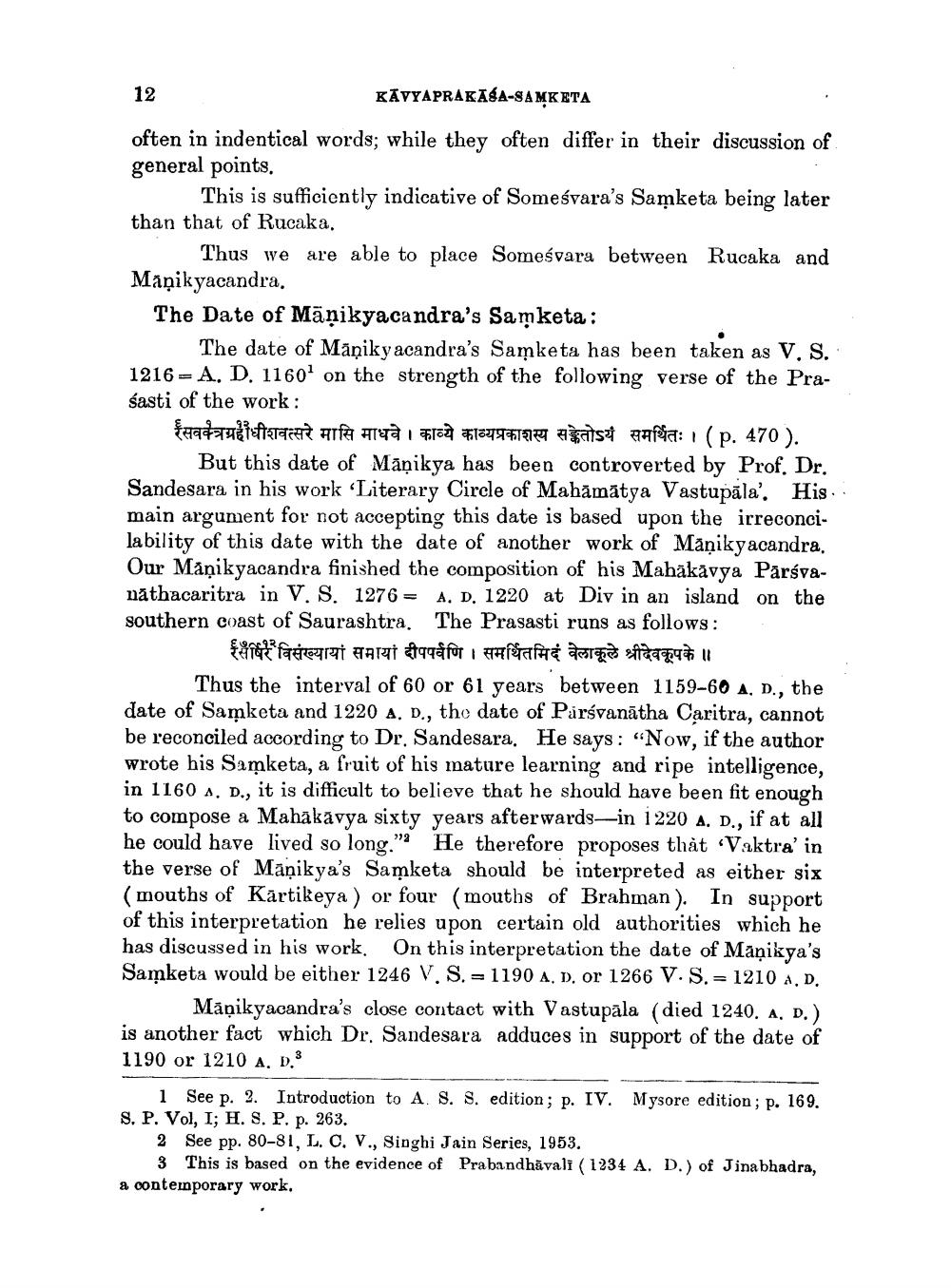________________
12
KĀVYAPRAKĀŠA-SAMKETA often in indentical words; while they often differ in their discussion of general points.
This is sufficiently indicative of Someśvara's Saņketa being later than that of Rucaka.
Thus we are able to place Someśvara between Rucaka and Māņikyacandra. The Date of Māņikyacandra's Samketa :
The date of Mäniky acandra's Samketa has been taken as V. S. 1216= A. D. 11607 on the strength of the following verse of the Praśasti of the work:
natalifta ha hai #12 #1349417R4 ECST anfa: (p. 470 ).
But this date of Māņikya has been controverted by Prof. Dr. Sandesara in his work Literary Circle of Mahāmātya Vastupāla'. His.. main argument for not accepting this date is based upon the irreconcilability of this date with the date of another work of Māņikyacandra. Our Māņikyacandra finished the composition of his Mabākävya Pārsvanăthacaritra in V. S. 1276 = A. D. 1220 at Div in an island on the southern coast of Saurashtra. The Prasasti runs as follows:
सपिर विसंख्यायां समायां दीपपर्वणि । समर्थितमिदं वेलाकूले श्रीदेवकूपके ॥
Thus the interval of 60 or 61 years between 1159-60 A, D., the date of Samketa and 1220 A, D., the date of Parsvanātha Caritra, cannot be reconciled according to Dr. Sandesara. He says: "Now, if the author wrote his Samketa, a fruit of his mature learning and ripe intelligence, in 1160 A, D., it is difficult to believe that he should have been fit enough to compose a Mahakavya sixty years afterwards—in 1220 A. D., if at all he could have lived so long." He therefore proposes that «Vaktra' in the verse of Māņikya's Samketa should be interpreted as either six (mouths of Kārtikeya ) or four (mouths of Brahman). In support of this interpretation he relies upon certain old authorities which he has discussed in his work. On this interpretation the date of Māņikya's Samketa would be either 1246 V.S. = 1190 A, D), or 1266 V.S.= 1210 A.D.
Māņikyacandra's close contact with Vastupāla (died 1240. A. D.) is another fact which Dr. Sandesara adduces in support of the date of 1190 or 1210 A, 0.3
1 See p. 2. Introduction to A. S. S. edition; p. IV. Mysore edition; p. 169. S. P. Vol, I; H. S. P. p. 263.
2 See pp. 80-81, L. C. V., Singhi Jain Series, 1953.
3 This is based on the evidence of Prabandhāvali (1234 A. D.) of Jina bhadra, a contemporary work.




